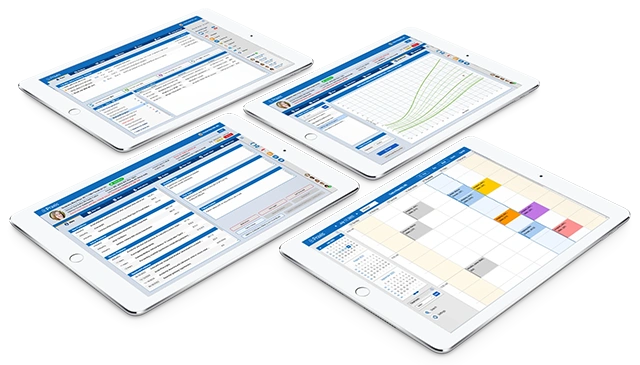Why The Other EHRs Don’t Work
If you are a provider who has tried several EHRs and all of them left you frustrated—if you are a doctor who realizes you are wasting hours each day on meaningless bureaucratic tasks and the computer feels like a constant hindrance—it is time to ask why.
Could it be that the underlying medical methodology, developed over the last two centuries and ingrained in us since medical school, is simply outdated in the age of computers? After all, none of our teachers used them, so they could only pass on what they themselves had learned.
The “Dead Paper Record Paradigm”
We propose that the real problem lies in the way we have been taught to think, practice, and chart medicine—a method that is fundamentally wrong in the computer age. Instead of helping us practice medicine more effectively, conventional health IT has done the opposite. The overwhelming mountain of data, medical codes, and bureaucratic requirements has turned our work into a nightmare. Isn’t it time we used our rational, scientific minds to evaluate what we are doing every day and identify the true source of the madness?
Our predecessors never faced these issues. When charting in medicine began in the early 1800s, it was merely a bureaucratic requirement in hospitals—recording the patient’s name, admission date, medical problem, and outcome. It wasn’t until the early 1900s that medical notes began in earnest, usually brief and often kept on 3x5 cards. In the 1950s, charting grew more extensive—driven by expanding lab tests, specialist referrals, and increasing malpractice risk, which demanded more defensive and precise documentation.
By the 1990s, Medicare and other insurers entered the picture, micromanaging the practice of medicine with requirements for detailed records and complex codes as conditions for payment. Charts became bloated and disconnected from reality: you could prescribe a drug without charting it—or chart it without ordering it. Either way, you had to do both.
Here is the turning point: when the government mandated computer use, instead of simplifying charting and documentation, it made everything worse. Why? Because nearly all EMRs simply transferred this dead paper record paradigm, unchanged, into the computer. Their developers—mostly technicians, not physicians—focused on porting the insanity rather than fixing it. To do the latter requires medical knowledge.
The Rise of Templates
Templates arose from two deeply flawed premises:
- That there is a “correct way” to practice medicine, to be defined by “experts,” reducing doctors to mere technicians and forcing patients into rigid, artificial molds. From day one, most physicians found themselves fighting the computer.
- That medicine is like engineering—that the human body is black and white, logical and mathematical—and that giant macros called templates could automate the practice of medicine. These were filled with factoids and irrelevancies that cluttered real patient care.
The result has been devastating. Many doctors have abandoned our noble profession under the stress. The art of medicine has been pushed aside. Productivity is measured by documentation volume rather than patient outcomes, patient satisfaction, or physician well-being.
What Does This Have to Do With the “Dead Paper Record Paradigm”?
Everything. What began as a simple aid to memory has grown into a crushing burden, consuming more than two hours a day with little benefit to clinical effectiveness or ease of use. Physicians are forced to think like computers just to survive the system. Clearly, this is not how computers should be used in healthcare.
Praxis offers a different approach. Instead of hindering, the computer becomes your ally. Praxis eliminates wasted time and actively helps you think through each case—by learning from the best teacher in the world: yourself—and progressively becoming faster and more effective.
Computers cannot do anything truly intelligent, but they can perform repetitive and tedious tasks—the ones that drive us crazy—far better than we can. This creates the perfect marriage between our creative yet rational minds and the computer’s ability to keep us perfectly organized without burdening us, reminding us of what needs to be done only at the right time, and never forgetting a detail. More importantly, Praxis shields us from the daily nightmares imposed by third parties. It frees our minds and our spirits, allowing us to practice the best medicine in the easiest possible way.
We submit that it is far better medicine—simpler, more effective, and far faster—to do what you wrote, rather than write what you did.
With Praxis, your chart comes alive!
How Praxis EMR Works
Praxis EMR is dramatically different. It thinks like you do. The Artificial Intelligence (AI) inside Praxis gets faster and easier as you use it. Praxis is not just an EHR system; it's a medical tool.
Learn more